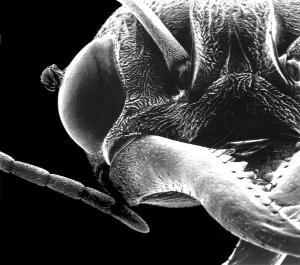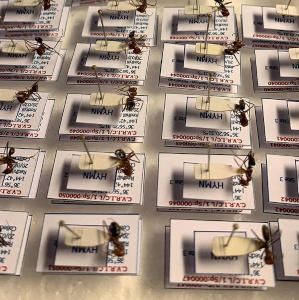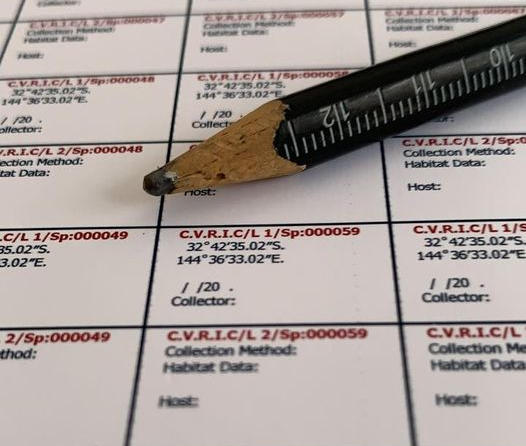News 2022
Why Just Ants?
Our first practical use for the C.V.R.I.C will be a joint research paper between
Dr Jenny Shield and the collections curator, Bert Candusio to correlate the regions ants to the regions ant mimicking spiders of the family Zodariidae.
This project will provide a better understanding of the relationships between different groups of invertebrates within a habitat.
To do this, the C.V.R.I.C ant holdings must be imaged, identified and databased.
Ants Away!
Labelling
First Research Project
DOCUMENTING THE INSECTS AND SPIDERS OF NORTH CENTRAL VICTORIA


Dr Jenny Shield Bert Candusio


Dr Jenny Shield Bert Candusio
Overall Aim:
To document the insects and spiders of Central Victoria one group at a time.
Short term aims:
To document the Hymenoptera (Ants and Wasps).
To document the ant-mimicing spiders: Zodariidae (Ant-eating spiders).
1. Description of undescribed species. Many species of Australian Zodariidae have been described in recent years by Dr Barbara Baehr and others. Yet there are still undescribed species in Central Victoria. This will involve taxonomic work and description of these currently undescribed species and publishing them in taxonomic journals and/or collaborating with other entomologists/arachnologists who are working on these groups to have them described.
2. Database based on the specimens in the collection to begin to define where each species occurs and publish online.
3. Photographic documentation of each species.
References:
Shield JM and Harrison S. Invertebrate biodiversity conservation education: experience in a Bendigo primary school. Memoirs of the Queensland Museum 1994; 36: 197-201.
Shield JM and Strudwick J. Diasterea, a new genus of flower spider (Thomisidae: Thomisinae) from Eastern Australia and a description of the male Diasterea lactea. Proceedings of the Royal Society of Victora 1999; 111:271-281.
Shield JM. Spiders (Araneae) of irrigated pasture with and without shelterbelt of native vegetation near Cohuna, Victoria. Records of the South Australian Museum Monograph Series 2003; No. 7:187-191.
Shield JM. Spiders of Bendigo and Victoria’s Box Ironbark Country. Bendigo: Bendigo Field Naturalists Club, 2001.
Candusio, B. 1996, 'Ecology of forest vertebrates in Central Victoria', Park Watch, vol. March, pp. 23-25.
Candusio, B. 1996, 'Ecology of forest vertebrates in Central Victoria', Park Watch, vol. March, pp. 23-25.




